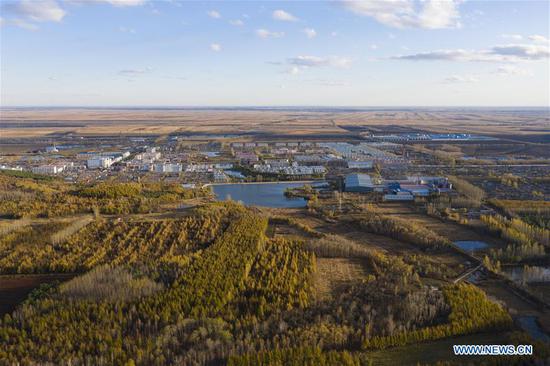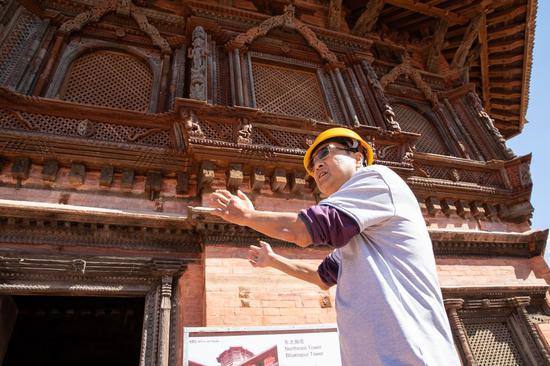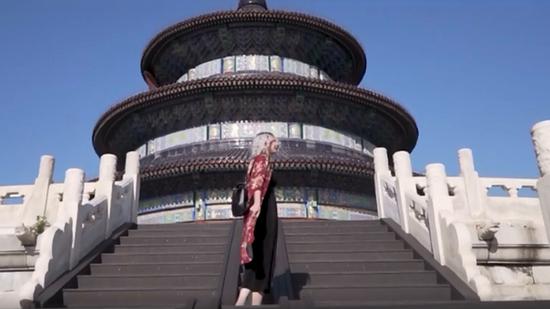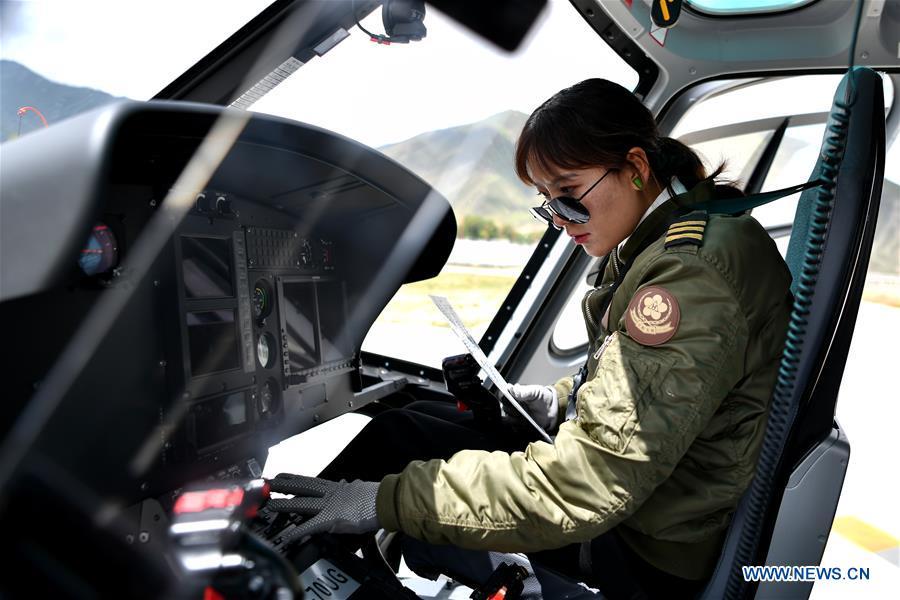
Jianre Yixi prepares to fly a helicopter in southwest China's Tibet Autonomous Region, Aug. 7, 2019. The Qinghai-Tibet Plateau was once known as a "no-fly zone" and it was extremely difficult to fly helicopters there. Now, after professional and intensive training, the first batch of young Tibetans has flown civilian helicopters to the Mt. Qomolangma base camp. Jianre Yixi is from an impoverished herdsman family in Damxung County, Tibet. In 2016, Jianre Yixi, a student at Lhasa's No. 2 Secondary Vocational and Technical School, received a call to change her fate when a company selected pilots from poverty-stricken families. After studying more than 10 theoretical courses and hundreds of hours of intensive training, Jianre Yixi spent one year learning the flight skills and successfully obtained a commercial helicopter flight license. "The cost of training a pilot exceeds 1 million yuan (140,942 U.S. dollars), which is entirely covered by the government and enterprises. This has changed her destiny and that of her family. Once I flew a helicopter back to Damxung on a mission, the villagers praised me as a fairy flying into the blue sky and a pride of Damxung," she said. (Xinhua/Sun Fei)
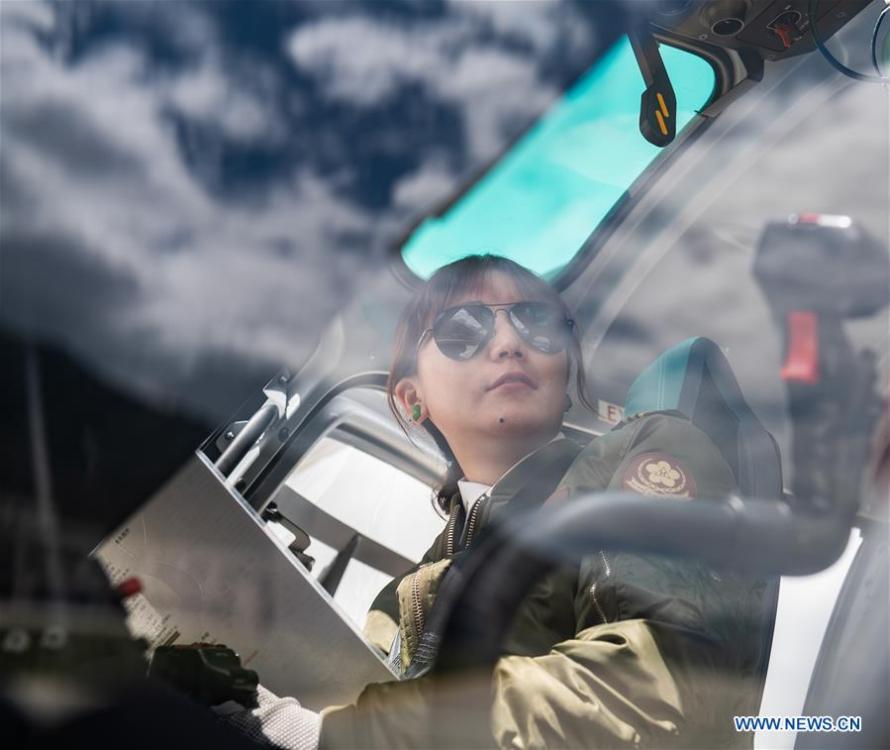
Jianre Yixi prepares to fly a helicopter in southwest China's Tibet Autonomous Region, Aug. 7, 2019. The Qinghai-Tibet Plateau was once known as a "no-fly zone" and it was extremely difficult to fly helicopters there. Now, after professional and intensive training, the first batch of young Tibetans has flown civilian helicopters to the Mt. Qomolangma base camp. Jianre Yixi is from an impoverished herdsman family in Damxung County, Tibet. In 2016, Jianre Yixi, a student at Lhasa's No. 2 Secondary Vocational and Technical School, received a call to change her fate when a company selected pilots from poverty-stricken families. After studying more than 10 theoretical courses and hundreds of hours of intensive training, Jianre Yixi spent one year learning the flight skills and successfully obtained a commercial helicopter flight license. "The cost of training a pilot exceeds 1 million yuan (140,942 U.S. dollars), which is entirely covered by the government and enterprises. This has changed her destiny and that of her family. Once I flew a helicopter back to Damxung on a mission, the villagers praised me as a fairy flying into the blue sky and a pride of Damxung," she said. (Xinhua/Jigme Dorje)
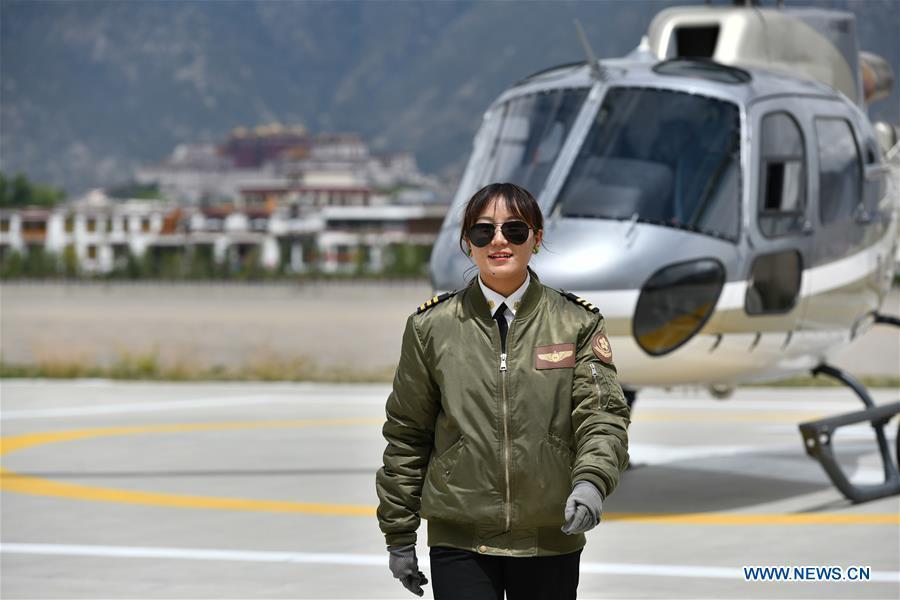
Jianre Yixi walks before a helicopter in southwest China's Tibet Autonomous Region, Aug. 7, 2019. The Qinghai-Tibet Plateau was once known as a "no-fly zone" and it was extremely difficult to fly helicopters there. Now, after professional and intensive training, the first batch of young Tibetans has flown civilian helicopters to the Mt. Qomolangma base camp. Jianre Yixi is from an impoverished herdsman family in Damxung County, Tibet. In 2016, Jianre Yixi, a student at Lhasa's No. 2 Secondary Vocational and Technical School, received a call to change her fate when a company selected pilots from poverty-stricken families. After studying more than 10 theoretical courses and hundreds of hours of intensive training, Jianre Yixi spent one year learning the flight skills and successfully obtained a commercial helicopter flight license. "The cost of training a pilot exceeds 1 million yuan (140,942 U.S. dollars), which is entirely covered by the government and enterprises. This has changed her destiny and that of her family. Once I flew a helicopter back to Damxung on a mission, the villagers praised me as a fairy flying into the blue sky and a pride of Damxung," she said. (Xinhua/Li Xin)
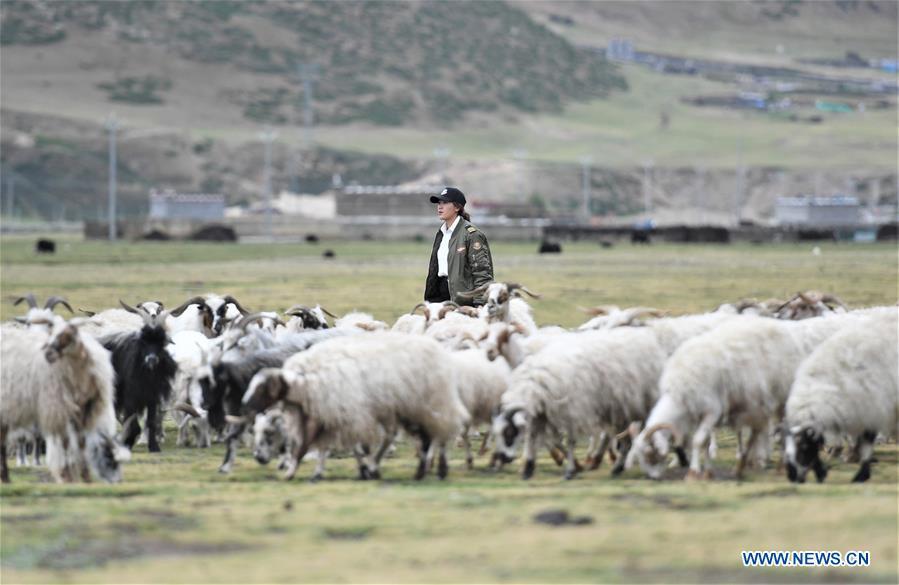
Jianre Yixi herds sheep in southwest China's Tibet Autonomous Region, July 13, 2019. The Qinghai-Tibet Plateau was once known as a "no-fly zone" and it was extremely difficult to fly helicopters there. Now, after professional and intensive training, the first batch of young Tibetans has flown civilian helicopters to the Mt. Qomolangma base camp. Jianre Yixi is from an impoverished herdsman family in Damxung County, Tibet. In 2016, Jianre Yixi, a student at Lhasa's No. 2 Secondary Vocational and Technical School, received a call to change her fate when a company selected pilots from poverty-stricken families. After studying more than 10 theoretical courses and hundreds of hours of intensive training, Jianre Yixi spent one year learning the flight skills and successfully obtained a commercial helicopter flight license. "The cost of training a pilot exceeds 1 million yuan (140,942 U.S. dollars), which is entirely covered by the government and enterprises. This has changed her destiny and that of her family. Once I flew a helicopter back to Damxung on a mission, the villagers praised me as a fairy flying into the blue sky and a pride of Damxung," she said. (Xinhua/Purbu Zhaxi)
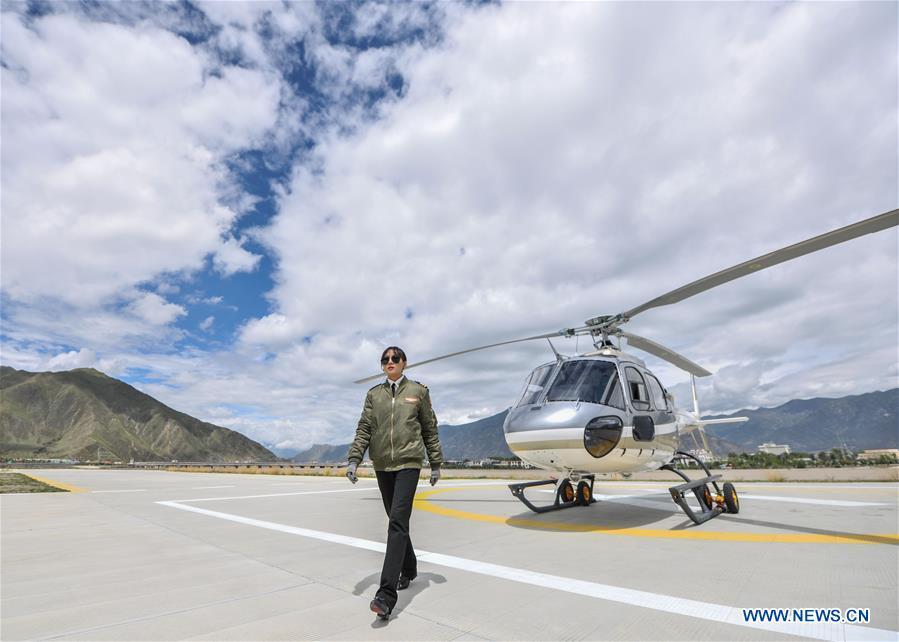
Jianre Yixi walks before a helicopter in southwest China's Tibet Autonomous Region, Aug. 7, 2019. The Qinghai-Tibet Plateau was once known as a "no-fly zone" and it was extremely difficult to fly helicopters there. Now, after professional and intensive training, the first batch of young Tibetans has flown civilian helicopters to the Mt. Qomolangma base camp. Jianre Yixi is from an impoverished herdsman family in Damxung County, Tibet. In 2016, Jianre Yixi, a student at Lhasa's No. 2 Secondary Vocational and Technical School, received a call to change her fate when a company selected pilots from poverty-stricken families. After studying more than 10 theoretical courses and hundreds of hours of intensive training, Jianre Yixi spent one year learning the flight skills and successfully obtained a commercial helicopter flight license. "The cost of training a pilot exceeds 1 million yuan (140,942 U.S. dollars), which is entirely covered by the government and enterprises. This has changed her destiny and that of her family. Once I flew a helicopter back to Damxung on a mission, the villagers praised me as a fairy flying into the blue sky and a pride of Damxung," she said. (Xinhua/Jigme Dorje)

Jianre Yixi stands in her family's pasture in southwest China's Tibet Autonomous Region, July 13, 2019. The Qinghai-Tibet Plateau was once known as a "no-fly zone" and it was extremely difficult to fly helicopters there. Now, after professional and intensive training, the first batch of young Tibetans has flown civilian helicopters to the Mt. Qomolangma base camp. Jianre Yixi is from an impoverished herdsman family in Damxung County, Tibet. In 2016, Jianre Yixi, a student at Lhasa's No. 2 Secondary Vocational and Technical School, received a call to change her fate when a company selected pilots from poverty-stricken families. After studying more than 10 theoretical courses and hundreds of hours of intensive training, Jianre Yixi spent one year learning the flight skills and successfully obtained a commercial helicopter flight license. "The cost of training a pilot exceeds 1 million yuan (140,942 U.S. dollars), which is entirely covered by the government and enterprises. This has changed her destiny and that of her family. Once I flew a helicopter back to Damxung on a mission, the villagers praised me as a fairy flying into the blue sky and a pride of Damxung," she said. (Xinhua/Purbu Zhaxi)
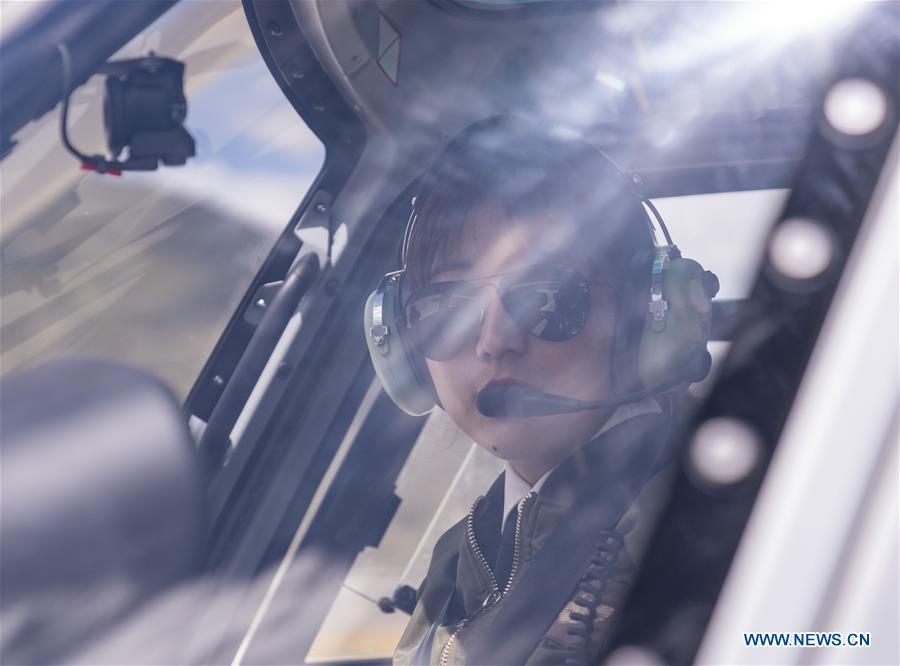
Jianre Yixi prepares to fly a helicopter in southwest China's Tibet Autonomous Region, Aug. 7, 2019. The Qinghai-Tibet Plateau was once known as a "no-fly zone" and it was extremely difficult to fly helicopters there. Now, after professional and intensive training, the first batch of young Tibetans has flown civilian helicopters to the Mt. Qomolangma base camp. Jianre Yixi is from an impoverished herdsman family in Damxung County, Tibet. In 2016, Jianre Yixi, a student at Lhasa's No. 2 Secondary Vocational and Technical School, received a call to change her fate when a company selected pilots from poverty-stricken families. After studying more than 10 theoretical courses and hundreds of hours of intensive training, Jianre Yixi spent one year learning the flight skills and successfully obtained a commercial helicopter flight license. "The cost of training a pilot exceeds 1 million yuan (140,942 U.S. dollars), which is entirely covered by the government and enterprises. This has changed her destiny and that of her family. Once I flew a helicopter back to Damxung on a mission, the villagers praised me as a fairy flying into the blue sky and a pride of Damxung," she said. (Xinhua/Sun Fei)
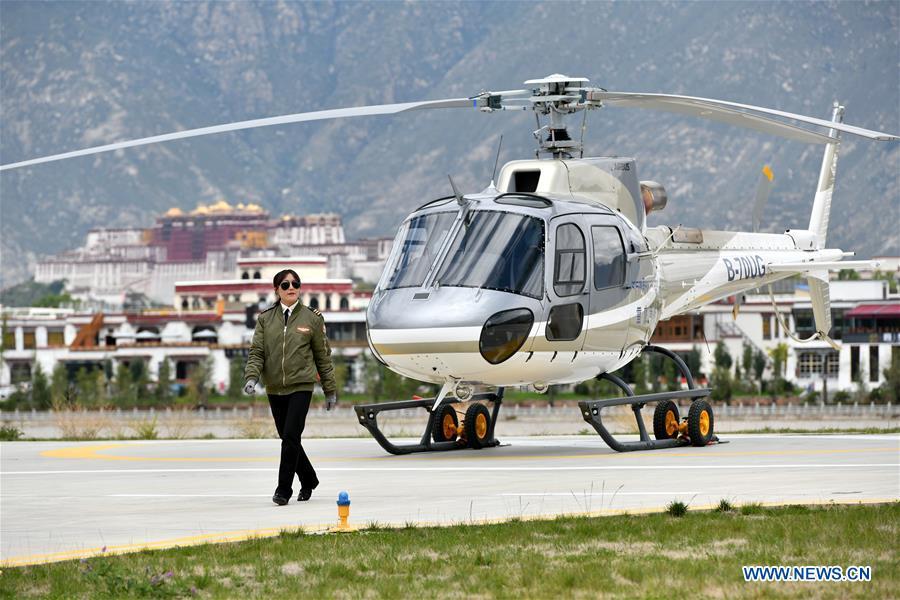
Jianre Yixi walks before a helicopter in southwest China's Tibet Autonomous Region, Aug. 7, 2019. The Qinghai-Tibet Plateau was once known as a "no-fly zone" and it was extremely difficult to fly helicopters there. Now, after professional and intensive training, the first batch of young Tibetans has flown civilian helicopters to the Mt. Qomolangma base camp. Jianre Yixi is from an impoverished herdsman family in Damxung County, Tibet. In 2016, Jianre Yixi, a student at Lhasa's No. 2 Secondary Vocational and Technical School, received a call to change her fate when a company selected pilots from poverty-stricken families. After studying more than 10 theoretical courses and hundreds of hours of intensive training, Jianre Yixi spent one year learning the flight skills and successfully obtained a commercial helicopter flight license. "The cost of training a pilot exceeds 1 million yuan (140,942 U.S. dollars), which is entirely covered by the government and enterprises. This has changed her destiny and that of her family. Once I flew a helicopter back to Damxung on a mission, the villagers praised me as a fairy flying into the blue sky and a pride of Damxung," she said. (Xinhua/Li Xin)
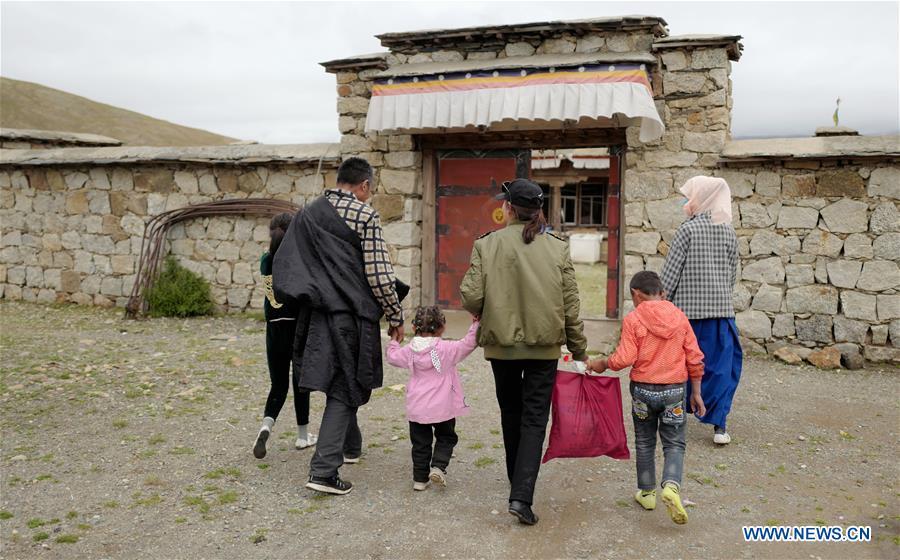
Jianre Yixi (C) comes home to visit parents in southwest China's Tibet Autonomous Region, July 13, 2019. The Qinghai-Tibet Plateau was once known as a "no-fly zone" and it was extremely difficult to fly helicopters there. Now, after professional and intensive training, the first batch of young Tibetans has flown civilian helicopters to the Mt. Qomolangma base camp. Jianre Yixi is from an impoverished herdsman family in Damxung County, Tibet. In 2016, Jianre Yixi, a student at Lhasa's No. 2 Secondary Vocational and Technical School, received a call to change her fate when a company selected pilots from poverty-stricken families. After studying more than 10 theoretical courses and hundreds of hours of intensive training, Jianre Yixi spent one year learning the flight skills and successfully obtained a commercial helicopter flight license. "The cost of training a pilot exceeds 1 million yuan (140,942 U.S. dollars), which is entirely covered by the government and enterprises. This has changed her destiny and that of her family. Once I flew a helicopter back to Damxung on a mission, the villagers praised me as a fairy flying into the blue sky and a pride of Damxung," she said. (Xinhua/Purbu Zhaxi)

Jianre Yixi (2nd R) flies paper plane with siblings in southwest China's Tibet Autonomous Region, July 13, 2019. The Qinghai-Tibet Plateau was once known as a "no-fly zone" and it was extremely difficult to fly helicopters there. Now, after professional and intensive training, the first batch of young Tibetans has flown civilian helicopters to the Mt. Qomolangma base camp. Jianre Yixi is from an impoverished herdsman family in Damxung County, Tibet. In 2016, Jianre Yixi, a student at Lhasa's No. 2 Secondary Vocational and Technical School, received a call to change her fate when a company selected pilots from poverty-stricken families. After studying more than 10 theoretical courses and hundreds of hours of intensive training, Jianre Yixi spent one year learning the flight skills and successfully obtained a commercial helicopter flight license. "The cost of training a pilot exceeds 1 million yuan (140,942 U.S. dollars), which is entirely covered by the government and enterprises. This has changed her destiny and that of her family. Once I flew a helicopter back to Damxung on a mission, the villagers praised me as a fairy flying into the blue sky and a pride of Damxung," she said. (Xinhua/Purbu Zhaxi)
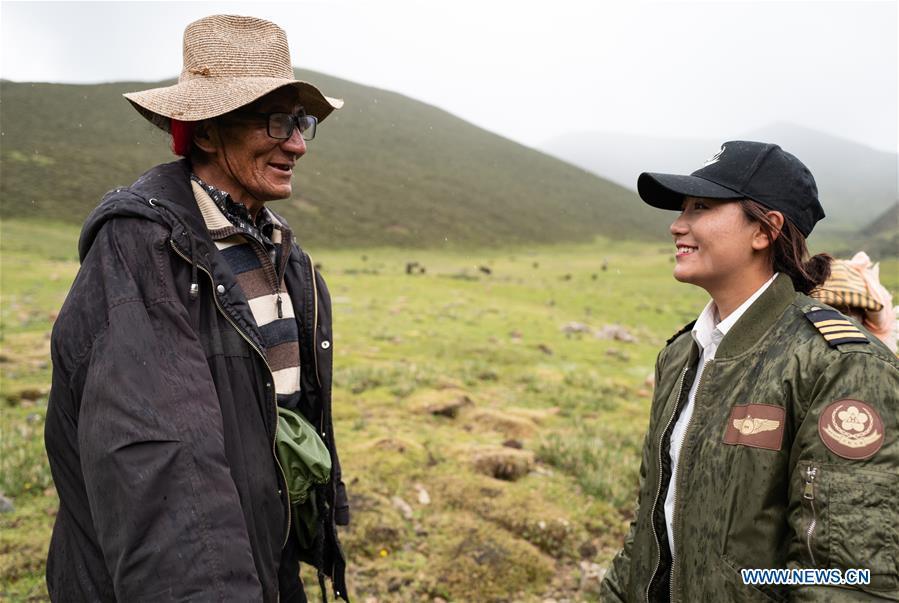
Jianre Yixi talks with a herdsman in southwest China's Tibet Autonomous Region, July 13, 2019. The Qinghai-Tibet Plateau was once known as a "no-fly zone" and it was extremely difficult to fly helicopters there. Now, after professional and intensive training, the first batch of young Tibetans has flown civilian helicopters to the Mt. Qomolangma base camp. Jianre Yixi is from an impoverished herdsman family in Damxung County, Tibet. In 2016, Jianre Yixi, a student at Lhasa's No. 2 Secondary Vocational and Technical School, received a call to change her fate when a company selected pilots from poverty-stricken families. After studying more than 10 theoretical courses and hundreds of hours of intensive training, Jianre Yixi spent one year learning the flight skills and successfully obtained a commercial helicopter flight license. "The cost of training a pilot exceeds 1 million yuan (140,942 U.S. dollars), which is entirely covered by the government and enterprises. This has changed her destiny and that of her family. Once I flew a helicopter back to Damxung on a mission, the villagers praised me as a fairy flying into the blue sky and a pride of Damxung," she said. (Xinhua/Purbu Zhaxi)
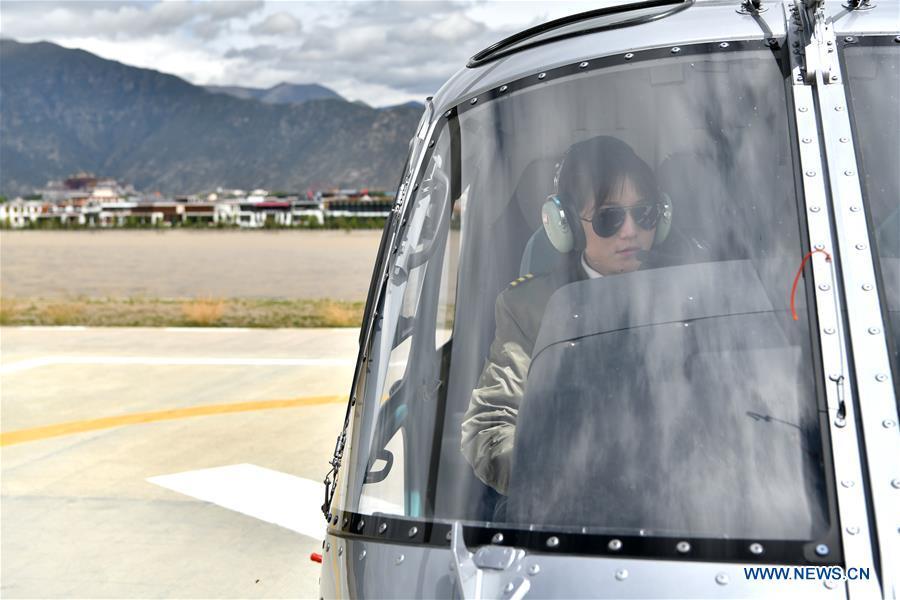
Jianre Yixi prepares to fly a helicopter in southwest China's Tibet Autonomous Region, Aug. 7, 2019. The Qinghai-Tibet Plateau was once known as a "no-fly zone" and it was extremely difficult to fly helicopters there. Now, after professional and intensive training, the first batch of young Tibetans has flown civilian helicopters to the Mt. Qomolangma base camp. Jianre Yixi is from an impoverished herdsman family in Damxung County, Tibet. In 2016, Jianre Yixi, a student at Lhasa's No. 2 Secondary Vocational and Technical School, received a call to change her fate when a company selected pilots from poverty-stricken families. After studying more than 10 theoretical courses and hundreds of hours of intensive training, Jianre Yixi spent one year learning the flight skills and successfully obtained a commercial helicopter flight license. "The cost of training a pilot exceeds 1 million yuan (140,942 U.S. dollars), which is entirely covered by the government and enterprises. This has changed her destiny and that of her family. Once I flew a helicopter back to Damxung on a mission, the villagers praised me as a fairy flying into the blue sky and a pride of Damxung," she said. (Xinhua/Li Xin)
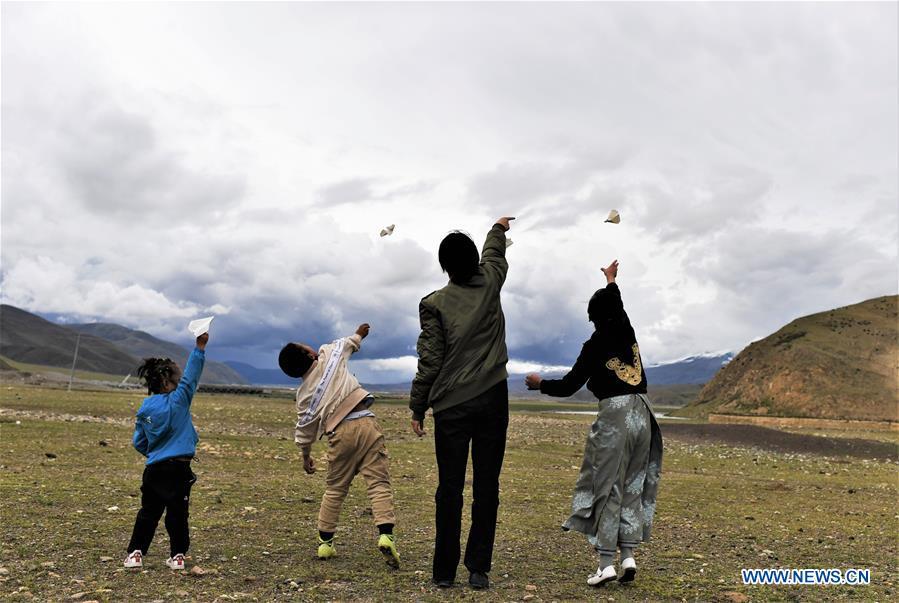
Jianre Yixi (2nd R) flies paper plane with siblings in southwest China's Tibet Autonomous Region, July 13, 2019. The Qinghai-Tibet Plateau was once known as a "no-fly zone" and it was extremely difficult to fly helicopters there. Now, after professional and intensive training, the first batch of young Tibetans has flown civilian helicopters to the Mt. Qomolangma base camp. Jianre Yixi is from an impoverished herdsman family in Damxung County, Tibet. In 2016, Jianre Yixi, a student at Lhasa's No. 2 Secondary Vocational and Technical School, received a call to change her fate when a company selected pilots from poverty-stricken families. After studying more than 10 theoretical courses and hundreds of hours of intensive training, Jianre Yixi spent one year learning the flight skills and successfully obtained a commercial helicopter flight license. "The cost of training a pilot exceeds 1 million yuan (140,942 U.S. dollars), which is entirely covered by the government and enterprises. This has changed her destiny and that of her family. Once I flew a helicopter back to Damxung on a mission, the villagers praised me as a fairy flying into the blue sky and a pride of Damxung," she said. (Xinhua/Purbu Zhaxi)










